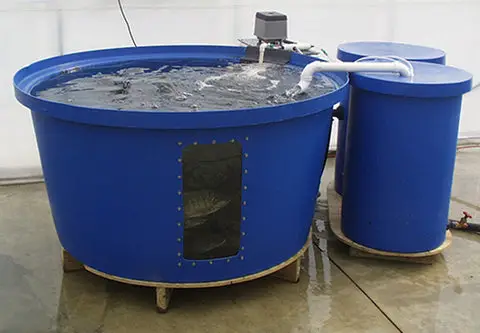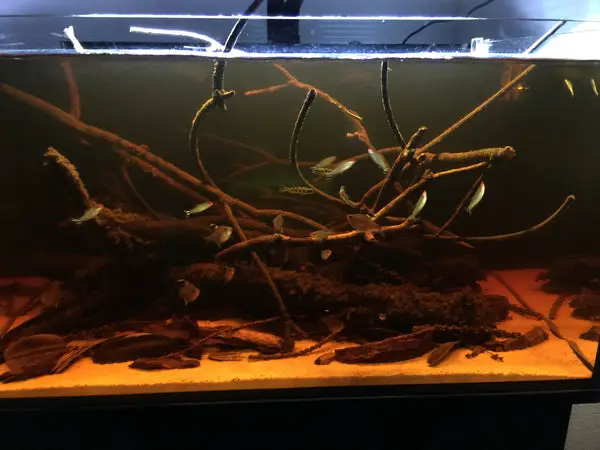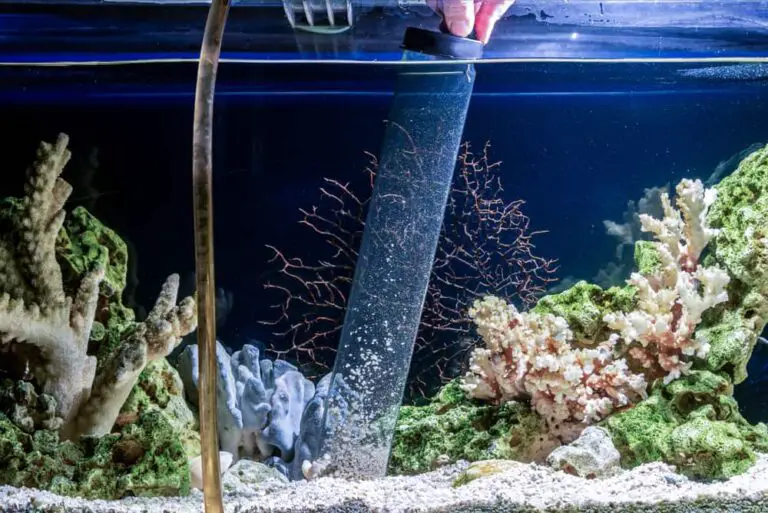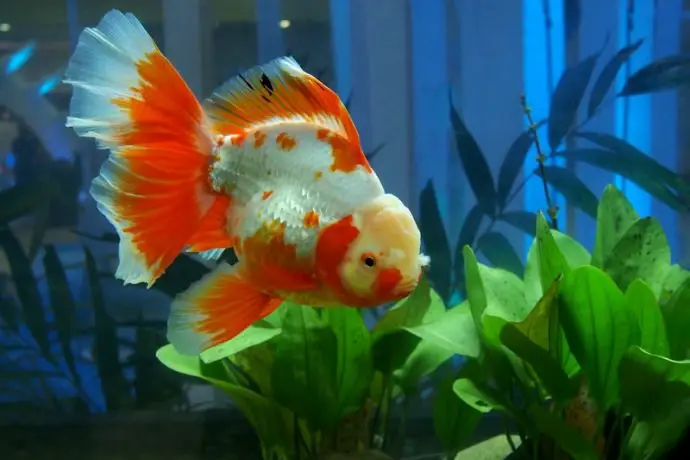Benefits of Owning Aquaponics Fish Tank
An aquaponics fish tank is a type of hydroponic system that combines the cultivation of plants and fish in one integrated closed-loop ecosystem. The main components of an aquaponics setup are a water source, typically from a fish tank, with plumbing to pump nutrient rich water to the plant growing beds. The nutrients come from the waste produced by the fish which is broken down into nitrates and ammonia by beneficial bacteria in the aquarium filter media bed.
Plants grown in this system absorb these nutrients for growth while also providing oxygen to keep your fish healthy and happy. Aquaponics systems can be constructed on any scale, from small home setups to large commercial farms.
Aquaponics Fish Tank is a great way to combine the best of both worlds; aquaculture and hydroponics. This type of system uses fish waste as an organic fertilizer for plants, creating an efficient and sustainable growing environment for both aquatic life and vegetation.
With this method, you can enjoy the beauty of a gorgeous aquarium filled with vibrant fish while also having fresh produce from your own home!
I Grew 7 Easy Vegetables in My Aquarium!
What Kind of Fish Tank is Used in Aquaponics?
Aquaponics is a growing form of agriculture that is gaining popularity around the world. Aquaponics combines plant cultivation and fish farming in an integrated system where plants are grown in water with nutrients provided by fish waste, while the fish get filtered water and a clean environment to live in. In order for this system to work effectively, it is important to choose the right kind of fish tank for your aquaponic setup.
The most common type of tank used for aquaponic systems is a food-grade polyethylene (or plastic) tank because they are safe for both aquatic life and edible crops. These tanks come in many sizes depending on how much space you have available, but typically range from 50 gallons up to 500 gallons or more. Many aquaculture experts recommend using round tanks as these provide better flow patterns than rectangular ones which can trap debris at corners and other dead spots within the aquarium.
For larger scale setups, fiberglass tanks may be used instead as these are stronger than plastic tanks, allowing them to hold heavier loads such as large ponds with multiple levels or extensive plumbing systems. Regardless of what type of tank you use, make sure that all components including filters and pumps meet safety standards before setting up your aquaponic system!
Are Aquaponic Tanks Safe for Fish?
Aquaponic tanks provide an excellent and safe home for fish, but there are a few things you should consider before setting up your tank.
First, be sure that the tank is large enough to house all of the fish comfortably. It’s important to have plenty of room so they can move around and remain healthy.
Additionally, make sure that you research any types of plants or decorations you want to include in the tank some may not be suitable for aquariums because they contain toxins or sharp edges. Be sure to keep your water clean and well-aerated by replacing it regularly with fresh water; this will help prevent bacteria buildup which can harm the fish.
Finally, pay attention to what kind of food you feed them: stick with high-quality foods specifically formulated for aquatic creatures rather than human food scraps or other leftovers as these could introduce contaminants into the tank environment.
With proper care and maintenance, aquaponic tanks can provide a safe and comfortable home for your finned friends!
What Kills Fish in Aquaponics?
Aquaponics is a sustainable and efficient method of producing food, but it’s not without its challenges. One of the most common issues faced by aquaponic gardeners is fish kills when all or part of their fish population dies unexpectedly. While there are many potential causes for this, some of the more common ones include water quality problems (such as too much ammonia or nitrates), disease outbreaks, poor diet, overcrowding in tanks, sudden temperature changes and even predatory attacks from other animals.
It’s important to be proactive about addressing any potential problems before they result in a full-blown fish kill; regular testing and monitoring of your system can help you catch issues early on so that corrective action can be taken quickly.
Additionally, providing appropriate nutrition for your fish and maintaining good husbandry practices such as proper stocking density will also go a long way towards preventing fatal incidents with your aquaponic system.
What Size Tank for Aquaponics Fish?
When it comes to aquaponics, one of the most important decisions you’ll make is determining which size tank to use for your fish. Generally speaking, a larger tank will provide more space and stability for the system, but it’s also important to consider other factors such as the type of fish you plan on stocking. For instance, some species require more room than others while some are best suited in smaller enclosures due to their temperament or activity levels.
In general, we recommend that aquaponic tanks be at least 55 gallons (208 liters) in capacity and 4 feet (1.2 meters) in length. This provides enough space for up to 6 medium-sized fish without overcrowding them too much.
Additionally, having a large surface area helps ensure the water stays well oxygenated and can properly cycle nutrients throughout the system; this is especially true if you’re planning on keeping multiple types of fish with different swimming depths within your setup.
Lastly, always keep an eye out when selecting livestock as certain species may grow quite large over time. So try not to stock anything beyond what your tank can comfortably hold!

Credit: www.pinterest.com
Hydroponic Fish Tank Garden
Hydroponic fish tank gardens are a great way to combine aquaculture with gardening. These systems use nutrients from the water of an aquarium to circulate and feed plants that are grown in trays above the tanks. This type of garden offers both aesthetic and functional benefits including improved air quality, reduced risk of disease for aquatic life, space saving design, and an excellent source of organic food.
Hydroponic fish tank gardens offer an exciting way to enjoy the beauty of nature while also providing fresh produce year-round!
Aquaponics System
Aquaponics is a combination of aquaculture and hydroponics, where fish are raised in tanks and plants are grown without soil. This symbiotic system circulates the water between the two systems, allowing for both components to benefit from each other. The result is an efficient growing system that uses 90% less water than traditional farming methods while producing higher yields with fewer nutrient inputs!
Back to the Roots Fish Tank
The Back to the Roots Fish Tank is a unique and innovative way to combine aquaponics and home décor. This self-cleaning fish tank not only provides you with an attractive addition to your home, but also acts as a mini ecosystem that allows you to grow fresh herbs, fruits and vegetables right in your living room. The fish waste serves as natural fertilizer for the plants above while clean water is filtered back into the tank so it’s both easy on the environment and low maintenance.
It’s perfect for anyone who wants a creative way of bringing nature indoors!
Aquaponic Plants
Aquaponic gardening is an innovative and effective way to grow plants without soil. It combines the principles of aquaculture (raising fish) and hydroponics (growing plants in water). The fish waste provides a natural source of nutrients for the growing plants, which helps to reduce fertilizer costs as well as provide a more environmentally friendly form of food production.
Aquaponics also requires less water than traditional methods since it recycles the same water multiple times. This type of gardening has many benefits, including increased crop yields, reduced environmental impact, lower cost inputs, and faster harvest times.
Conclusion
In conclusion, an aquaponics fish tank is a great way to enjoy the beauty of aquatic life while also having a sustainable garden. Not only does it require minimal maintenance and care, but it can also provide you with organic produce that tastes amazing. Whether you are looking for something fun to do or trying to create your own backyard oasis, an aquaponics fish tank is definitely worth considering.
With its many benefits, it’s no wonder why this type of gardening system has become so popular in recent years!






